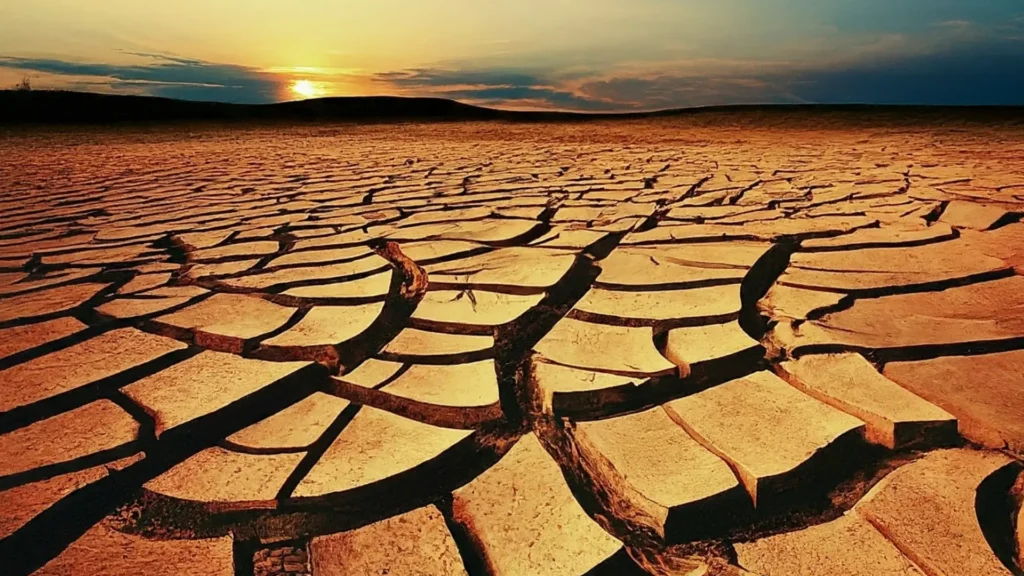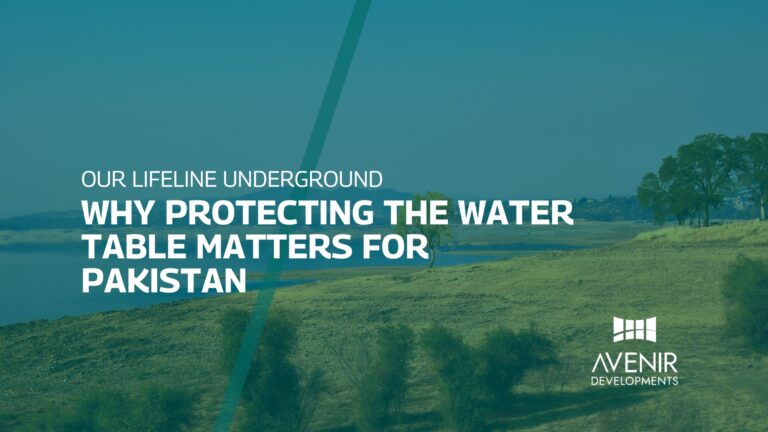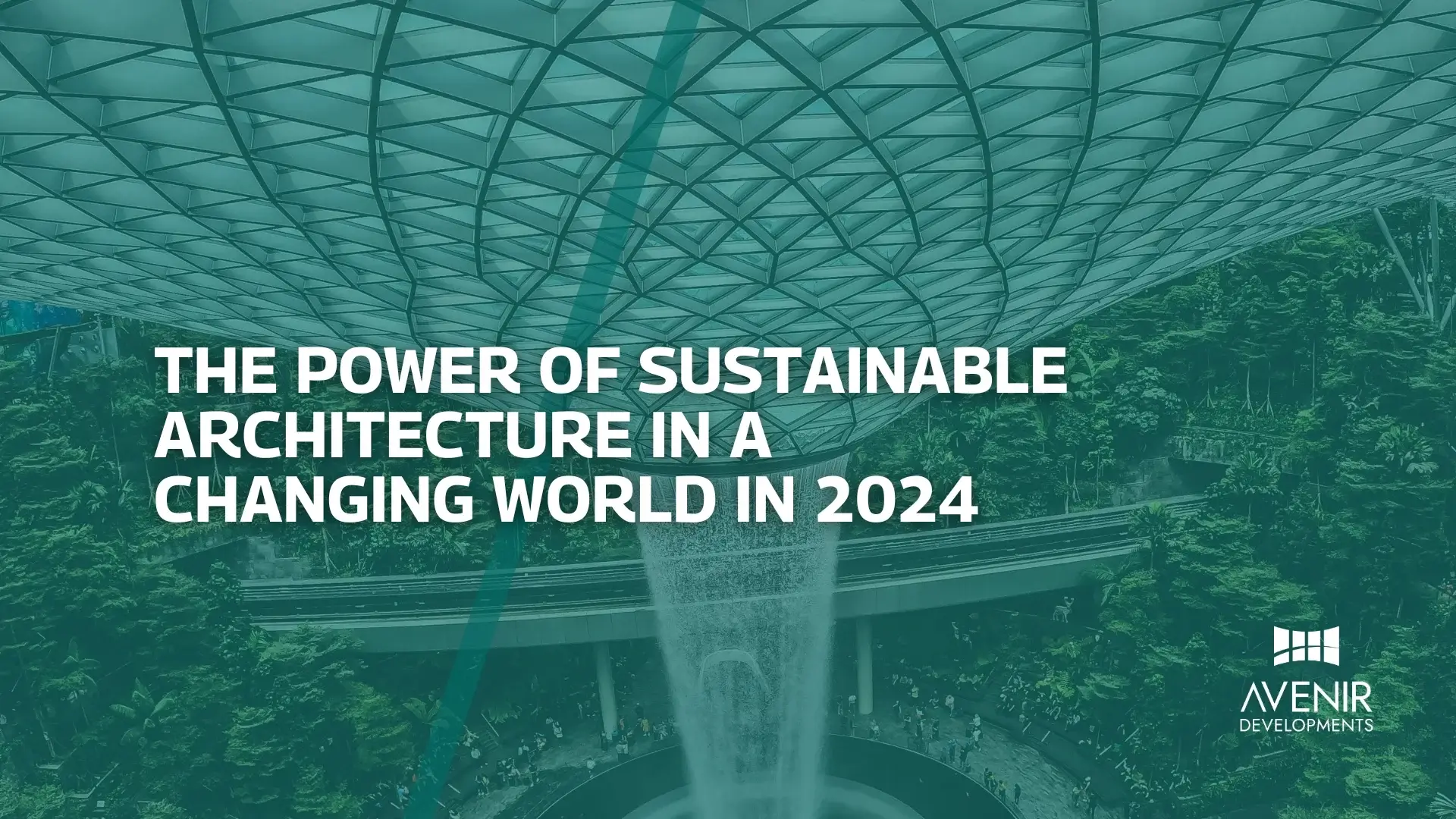I remember the scorching summer last year in Lahore. The sun beat down relentlessly, turning the city into a furnace. Air conditioners hummed day and night, but even they struggled to combat the heat. Water, usually abundant, became a precious commodity. Our taps sputtered and coughed, yielding mere trickles. The lush green lawns of our housing society withered and browned. It was a stark reminder of our dependence on the lifeline that flows beneath our feet: the water table. This experience, sadly, isn’t unique to Lahore. Cities across Pakistan grapple with the same issue, their very existence threatened by the declining water table.
Having lived and traveled extensively, I’ve seen firsthand the devastating effects of water scarcity. From the parched landscapes of the Australian outback to the water-stressed cities of the Middle East, the consequences are undeniable. But nowhere is the situation more critical than in Pakistan, where rapid urbanization, unsustainable agricultural practices, and climate change are pushing the water table to dangerously low levels.

Understanding the Water Table: Our Hidden Reservoir
So, what exactly is this “water table” we keep talking about? Simply put, it’s the upper level of an underground layer of rock and soil that’s saturated with water. Think of it as a massive, hidden reservoir beneath our feet. This groundwater is a vital source of freshwater for drinking, irrigation, and industrial use.
Historically, Pakistan has been blessed with abundant groundwater resources. The vast Indus River basin and its tributaries have recharged the water table for centuries, supporting agriculture and sustaining civilizations. However, this delicate balance is now under threat.
Over the past few decades, the water table in many parts of Pakistan has been declining at an alarming rate. Data from the Pakistan Council of Research in Water Resources (PCRWR) paints a grim picture. In Lahore, for instance, the water table has been dropping by an average of 0.5 to 1 meter per year. In some areas, it has plummeted by as much as 30 meters.
The reasons behind this decline are multifaceted. Rapid urbanization has led to the paving over of large swathes of land, preventing rainwater from percolating into the ground. Unregulated tube wells, often used for irrigation, are sucking up groundwater faster than it can be replenished. Climate change, with its erratic rainfall patterns and rising temperatures, is exacerbating the problem.
The consequences of a declining water table are far-reaching. It threatens our food security, as agriculture becomes increasingly dependent on unsustainable groundwater extraction. It also poses a risk to public health, as contaminated groundwater can seep into our drinking water supplies. And it can lead to land subsidence, causing damage to infrastructure and buildings.
The Current Landscape: Pakistan’s Water Woes
The situation on the ground is evolving rapidly. Recent government updates and news sources paint a complex picture of both challenges and potential solutions.
A major development is the launch of the National Water Policy in 2018. This comprehensive policy framework aims to address water scarcity through a multi-pronged approach. It emphasizes the need for improved water governance, efficient irrigation practices, and the development of new water sources.
In 2021, the government initiated the ‘Recharge Pakistan’ program, a major step towards replenishing our depleting aquifers. This initiative focuses on rainwater harvesting, the construction of recharge wells, and the promotion of water-saving technologies.
News sources like Dawn and The Express Tribune regularly report on water-related issues. These reports often highlight the plight of farmers struggling with water shortages, the contamination of groundwater with arsenic and other pollutants, and the growing conflicts over water resources.
Globally, trends like desalination are gaining traction as a potential solution for water-scarce regions. While Pakistan has yet to fully embrace this technology, there are pilot projects underway, such as the K-IV project in Karachi, which aims to provide desalinated water to the city’s growing population.
- National Water Policy 2018: http://www.mowr.gov.pk/
- National Water Conservation Strategy for Pakistan National Water Conservation Strategy for Pakistan
- World Bank: Managing Groundwater Resources in Pakistan’s Indus Basin
FAQs: Your Burning Questions Answered
Let’s address some of the most frequently asked questions about the water table in Pakistan:
Q1: Can the declining water table be reversed?
Yes, it’s possible to reverse the decline, but it requires a concerted effort at both the individual and societal level. We need to adopt sustainable water management practices, such as rainwater harvesting, efficient irrigation, and the use of water-saving technologies. We also need to regulate groundwater extraction and invest in aquifer recharge projects.
Q2: How can I contribute to protecting the water table?
There are several things you can do:
- Conserve water: Fix leaks, use water-saving appliances, and water your lawn sparingly.
- Harvest rainwater: Install rainwater harvesting systems to collect and store rainwater for later use.
- Plant trees: Trees help to recharge the water table by absorbing rainwater and reducing runoff.
- Support sustainable agriculture: Choose food products that are grown using water-efficient methods.
Q3: What are the government’s plans to address water scarcity?
The government has taken several steps, including the launch of the National Water Policy and the ‘Recharge Pakistan’ program. These initiatives aim to improve water governance, promote water conservation, and invest in new water sources.
Q4: Is desalination a viable solution for Pakistan?
Desalination is a potential solution, but it’s expensive and energy-intensive. It’s currently being explored as an option for coastal cities like Karachi, but its feasibility for other parts of the country remains uncertain.
Q5: What are the long-term consequences of ignoring the water table issue?
If we continue to ignore the declining water table, we risk a future of severe water scarcity, food shortages, public health crises, and economic instability. It’s a threat we cannot afford to ignore.
Expert Tips for a Water-Secure Future
As a property developer with extensive experience in Pakistan and abroad, I’ve seen firsthand the critical role that water plays in shaping communities and economies. Here are some expert tips I’ve gathered over the years to help you navigate the water challenges we face:
Prioritize Water-Efficient Design
- When designing buildings, incorporate rainwater harvesting systems, greywater recycling, and water-efficient fixtures.
- Use drought-resistant landscaping and xeriscaping techniques to minimize water consumption in outdoor areas.
Invest in Smart Irrigation
- Implement drip irrigation systems and smart irrigation controllers that adjust watering schedules based on weather conditions and soil moisture levels.
- Explore the use of treated wastewater for irrigation purposes.
Advocate for Sustainable Policies
- Support policies that promote water conservation, regulate groundwater extraction, and invest in aquifer recharge projects.
- Engage with your local community and government officials to raise awareness about the importance of protecting the water table.
Embrace Technology
- Utilize innovative technologies like smart water meters to monitor and optimize water usage.
- Explore the potential of desalination and other alternative water sources for your specific needs.
Educate and Empower
- Conduct workshops and training programs to educate people about water conservation and sustainable water management practices.
- Encourage community participation in water-related initiatives.
Remember, protecting the water table is a collective responsibility. By taking action at the individual and community level, we can ensure a water-secure future for ourselves and generations to come.
Safeguarding Our Lifeline, Building a Sustainable Future
The declining water table in Pakistan is a crisis that demands our immediate attention. We can’t afford to be complacent. The consequences of inaction are too dire to contemplate. But, it’s not all doom and gloom. As we’ve discussed, there are solutions available. By embracing sustainable water management practices, investing in new technologies, and advocating for sound policies, we can turn the tide.
We all have a role to play in this effort. Whether you’re a homeowner, a farmer, a business owner, or a policymaker, your actions matter. Remember, every drop counts. Let’s work together to safeguard our lifeline underground and build a sustainable future for Pakistan.
At Avenir Developments, we’re committed to creating a water-secure future. Our team of architects, engineers, and builders are experts in designing and constructing water-efficient homes and commercial buildings. We understand the unique challenges faced by property owners in Pakistan and are equipped to provide tailored solutions that meet your specific needs.
If you’re looking for professional services and consultancy in architecture, interior design, house construction, or custom home building, contact us on WhatsApp or call +923001101103. Let’s work together to build a more sustainable and resilient Pakistan.






